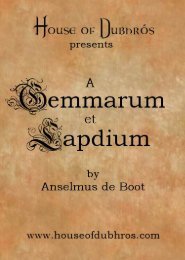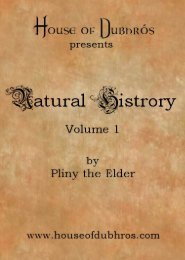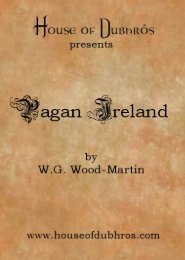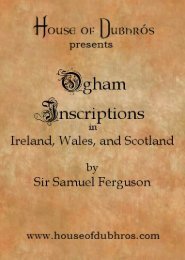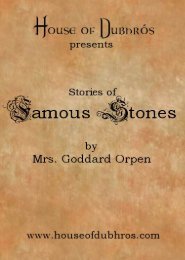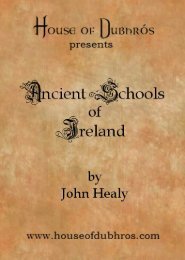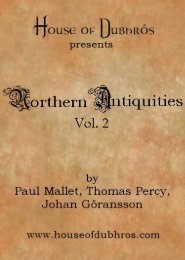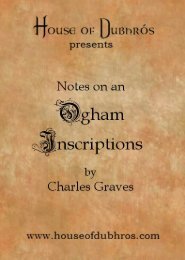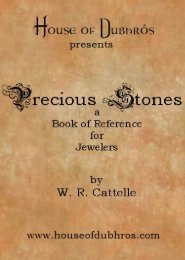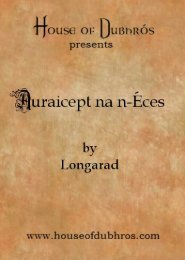You also want an ePaper? Increase the reach of your titles
YUMPU automatically turns print PDFs into web optimized ePapers that Google loves.
2 Introduction to<br />
survivor <strong>of</strong> such inscriptions. The alphabet was divided<br />
into three sets later styled in Icelandic Freys sett, Hagals<br />
&tt, Tys sett, from their initial letters F, H, T. These<br />
"<br />
names were understood as Frey's family," etc. but<br />
;<br />
tripartite division certainly goes back to the original<br />
alphabet it is found on the sixth century bracteate<br />
from Vadstena, Sweden and it is more probable that<br />
sett is derived from dtta, "<br />
eight," and so originally meant<br />
" octave." Each letter, moreover, occupied a definite<br />
position ; for in Codex Sangallensis<br />
270 are to be found<br />
several varieties <strong>of</strong> Runic cypher Isruna, Lagoruna, Hahal-<br />
runa, St<strong>of</strong>runa the solution <strong>of</strong> which demands a knowledge<br />
<strong>of</strong> the exact position <strong>of</strong> each letter in the alphabet. Thus<br />
in the Latin Gorui, the example given, the sixth letter <strong>of</strong><br />
the first series is C, the eighth <strong>of</strong> the third O, the fifth<br />
<strong>of</strong> the first R, the second <strong>of</strong> the first U, the third <strong>of</strong> the<br />
second I 1 . A<br />
cypher similar in type to the Hahalruna <strong>of</strong><br />
the St Gall MS., but adapted to the Scandinavian alphabet<br />
<strong>of</strong> the Viking Age, is to be found in the grave-chamber<br />
at Maeshowe (Orkney), and there are traces <strong>of</strong> similar<br />
characters, now for the most part illegible, in Hackness<br />
Church near Scarborough.<br />
Among the earliest inscriptions from the North <strong>of</strong><br />
Europe are those found in the bog-deposits <strong>of</strong> Nydaua and<br />
Torsbjaerg in Slesvig, Vi and Kragehul in Fyn, etc., which<br />
range in date from the third or fourth to the sixth century.<br />
They are written in a language which may be regarded as<br />
the common ancestor <strong>of</strong> English and Scandinavian ; it still<br />
preserves the full inflections and is thus more primitive than<br />
the Gothic <strong>of</strong> Wulfila. The contemporary inscription from<br />
the Golden Horn <strong>of</strong> Gallehus (Jutland) may be quoted as<br />
an illustration, Ek Hlewa^astiz Holtingaz horna tawicto.<br />
(I^Hlewagastiz^ Holtingazjnaade the horn.)<br />
1 These cryptograms are possibly to be attributed to Hrabanus Maurus,<br />
Abbot <strong>of</strong> Fulda (822-856), who is known to have been interested in the<br />
Eunic alphabet; cf. the Abecedarium Nordmannicum, p. 34 and his treatise<br />
De Inventions Linguarum (Migne cxn. 1582). Coruus is the Latin equivalent<br />
<strong>of</strong> Hraban (ON. Hrafri) and medieval scholars were fond <strong>of</strong> Latinizing their<br />
Teutonic names, e.g. Hrotsvith (Clamor validus), Aldhelm (Vetus galea).



